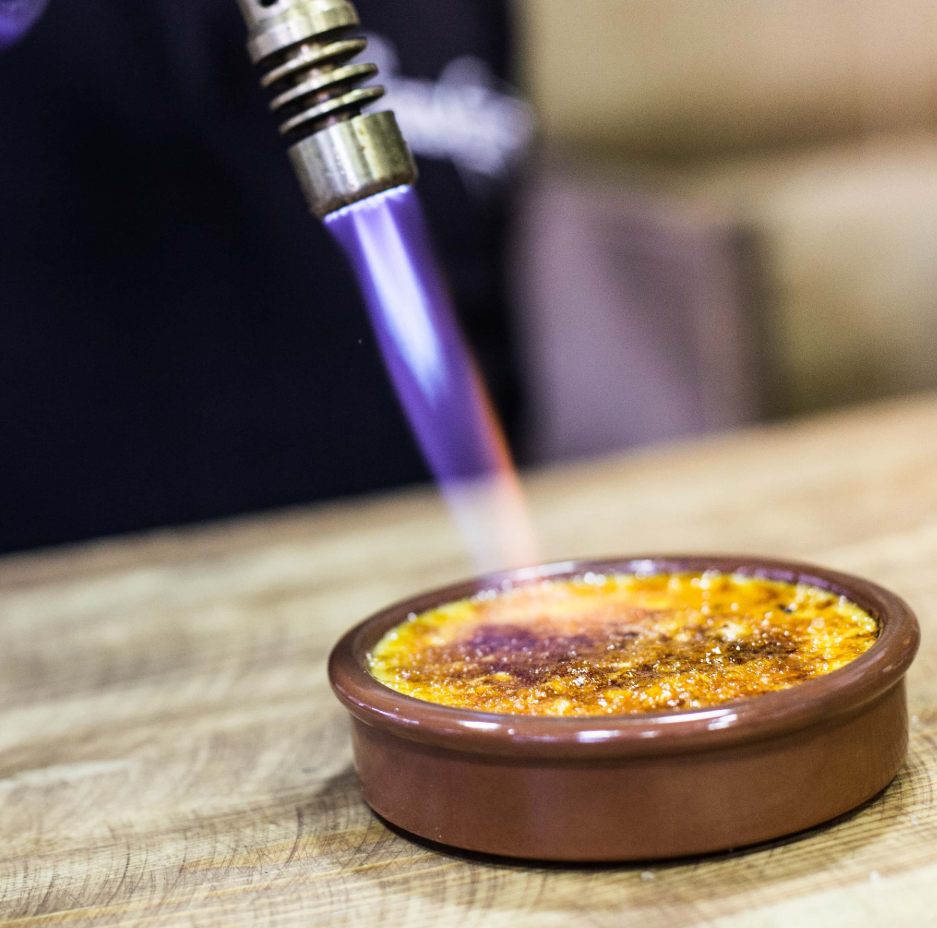Crème brûlée and custard are two classic desserts often compared because of their similar ingredients—eggs, sugar, and cream. While they may appear alike, their preparation, texture, and presentation set them apart. By understanding what’s the difference between crème brûlée and custard, you can better appreciate each dessert’s unique qualities.
To explore crème brûlée’s ingredients in more depth, visit What is Crème Brûlée Made Of?.
What Are Crème Brûlée and Custard?
Crème brûlée, which translates to “burnt cream,” is a French dessert featuring a smooth custard base topped with caramelized sugar. This crunchy sugar layer cracks under a spoon, creating a satisfying contrast to the creamy custard beneath.
Custard, on the other hand, is incredibly versatile. It can be light and pourable, like crème anglaise, or firm and sliceable, like flan. Its adaptability makes it a popular component in sweet and savory dishes. For creative recipes, explore savory custards in French cuisine.
Key Differences Between Crème Brûlée and Custard
1. Preparation Techniques
The way these desserts are made highlights their differences:
- Custard is often baked, stirred, or steamed, depending on the recipe. Stirred custards, such as pastry cream, require constant attention to prevent curdling. Baked custards, like flan, use a water bath to cook evenly.
- Crème Brûlée also begins with a baked custard. However, it stands out because of its caramelized sugar topping. Chefs create this by sprinkling sugar on top and melting it with a blowtorch or broiler.
To learn more about custard preparation, check out The Science of Custard.
2. Toppings and Presentation
- Crème brûlée is easily recognized by its caramelized sugar crust, which adds a satisfying crunch to the creamy base.
- Custard is typically served plain or garnished with fruits, sauces, or spices like nutmeg. It can also be molded, layered, or served in ramekins, depending on the dish.
3. Texture and Flavor
Crème brûlée combines a smooth custard base with the crispness of the sugar topping. The caramelized layer also introduces a subtle bitterness that balances the dessert’s sweetness.
Custard textures vary widely, ranging from soft and pourable to firm and sliceable. Its flavors can also be enhanced with chocolate, citrus, or vanilla.
FAQs About Crème Brûlée and Custard
1. Is crème brûlée a type of custard?
Yes, crème brûlée is a type of custard, but its caramelized sugar topping makes it unique.
2. Can custard be turned into crème brûlée?
Yes, by adding a sugar layer and caramelizing it, baked custard can resemble crème brûlée.
3. Which dessert is easier to make?
Custard is simpler because it doesn’t require caramelization. Crème brûlée involves more precision and effort.
4. Can crème brûlée be made without a blowtorch?
Yes, a broiler can be used to caramelize the sugar topping, although a blowtorch offers better control.
Related Recipes and Variations
- What Do Vegetarians Eat at Thanksgiving?: Find custard-friendly dishes to complement festive meals.
- What Do Vegetarians Eat Instead of Turkey?: Discover creative recipes to pair with custard or crème brûlée.
Final Thoughts
Crème brûlée and custard may share a common base, but their differences make them special. Crème brûlée’s caramelized sugar topping offers a delightful crunch, while custard shines with its versatility. Whether you’re drawn to the elegance of crème brûlée or the adaptability of custard, both desserts are worth exploring in your kitchen.

